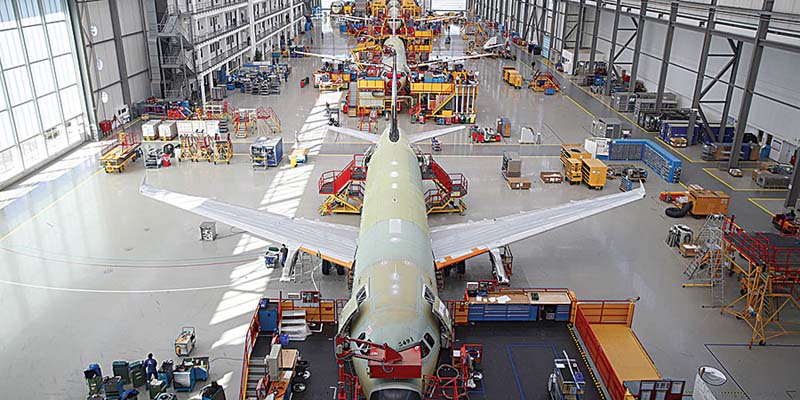The Boeing 797 is back in the design phase despite Boeing’s record losses in 2020.
In a conversation with a select group of analysts this week, Boeing President and CEO David Calhoun said the aerospace giant is making good progress in developing the engineering and manufacturing technology for the aircraft, Airline Ratings noted, according to Airline Ratings.
See also: Boeing to delay 777X again as it posts record annual loss.
Calhoun also added that he is prepared when that time comes to “deliver a truly differentiated product.”
That product is expected to be what is being called a 220-270-seat twin-aisle aircraft, with a range of 10-11 hours.
The configuration will likely be 2-3-2 in economy class, 1-2-2 in upper economy class and 1-1-1 in business class.
See also: Europe clears Boeing 737 Max to fly again.
The 797 will be made of composite material, like the 787, and will have all-new engines, but will be designed for medium-haul routes only and therefore will not be as heavy.
The secret to the economics of the 797, which will sit between the 737 and 787, is new technology.
Late last year, Calhoun told the media that Boeing has “some incredible underlying technologies that are going to support the point design of that next airplane,” and that he would evaluate the market toward the end of this year.
The larger Boeing 737, the MAX 10, cannot match the Airbus A321neoXLR, which can seat up to 240 in an economy configuration and fly up to 9,000 km, while the MAX 10 has a range of 6,100 km with 230 passengers.
This range deficit is critical in the COVID-19 world, as the ability to fly nonstop is essential to avoid virus hotspots.
The question for Boeing – and for the market – is whether to opt for the more luxurious twin-aisle design or a conventional single-aisle model.
The 797 concept is not new and has been around since the 1980s, when McDonnell Douglas, now merged with Boeing, touted the Advanced Twin-aisle Medium Range (ATMR) aircraft.
Although Atlanta-based Delta Air Lines wanted the ATMR, later called the DC-11, McDonnell Douglas management refused to take the risk despite an order for 60 and shelved the design.
Boeing also showed the same concept at the 1991 Paris Air Show, but was unable to do commercial work.
In 2021, a number of technological and engine improvements make a twin-aisle design feasible and desirable.
A twin-aisle aircraft would offer passengers much more space, not to mention 50% more baggage space in the overhead bins.
With airlines struggling to stay in the air, launching a new design will require innovative financing and Boeing would have to work closely with its historic partners in Japan and Italy.
China could also play a much larger outsourcing role with a possible production line there.
Analysts suggest that Boeing could launch within 12 months and put it into service in 2026/27.
Related Topics
Airbus Confirms Delivery of 78 Jets in October, Faces Challenge of Delivering 235 More in Two Months to Meet Annual Target
Wizz Air Delays Airbus Jets Deliveries Until 2033 and Reduces A321XLR Order
Airbus Delivers 78 Aircraft in October, Sources Said
Korean Air Becomes New Airbus A350F Customer

Plataforma Informativa de Aviación Comercial con 13 años de trayectoria.




